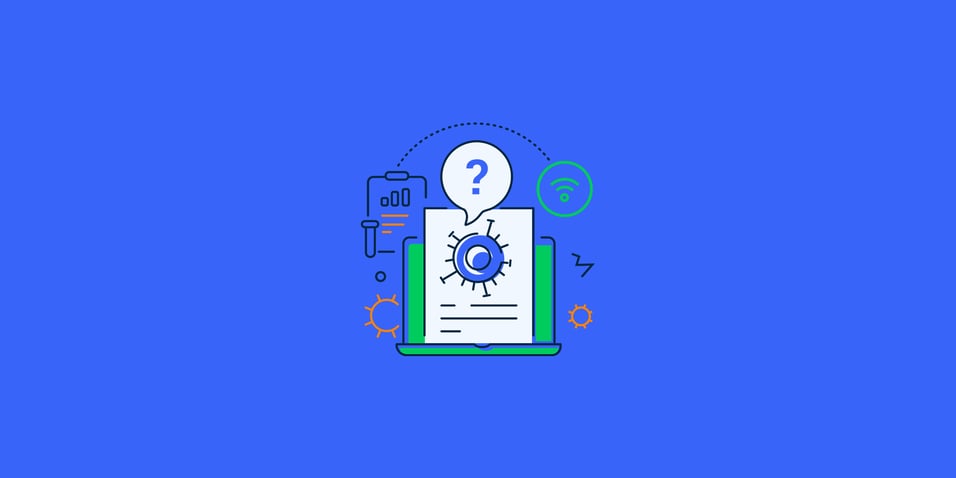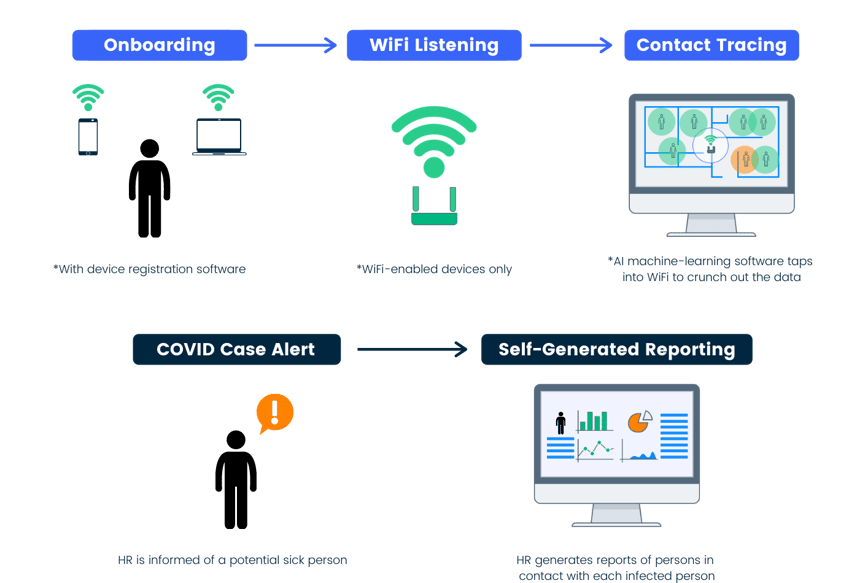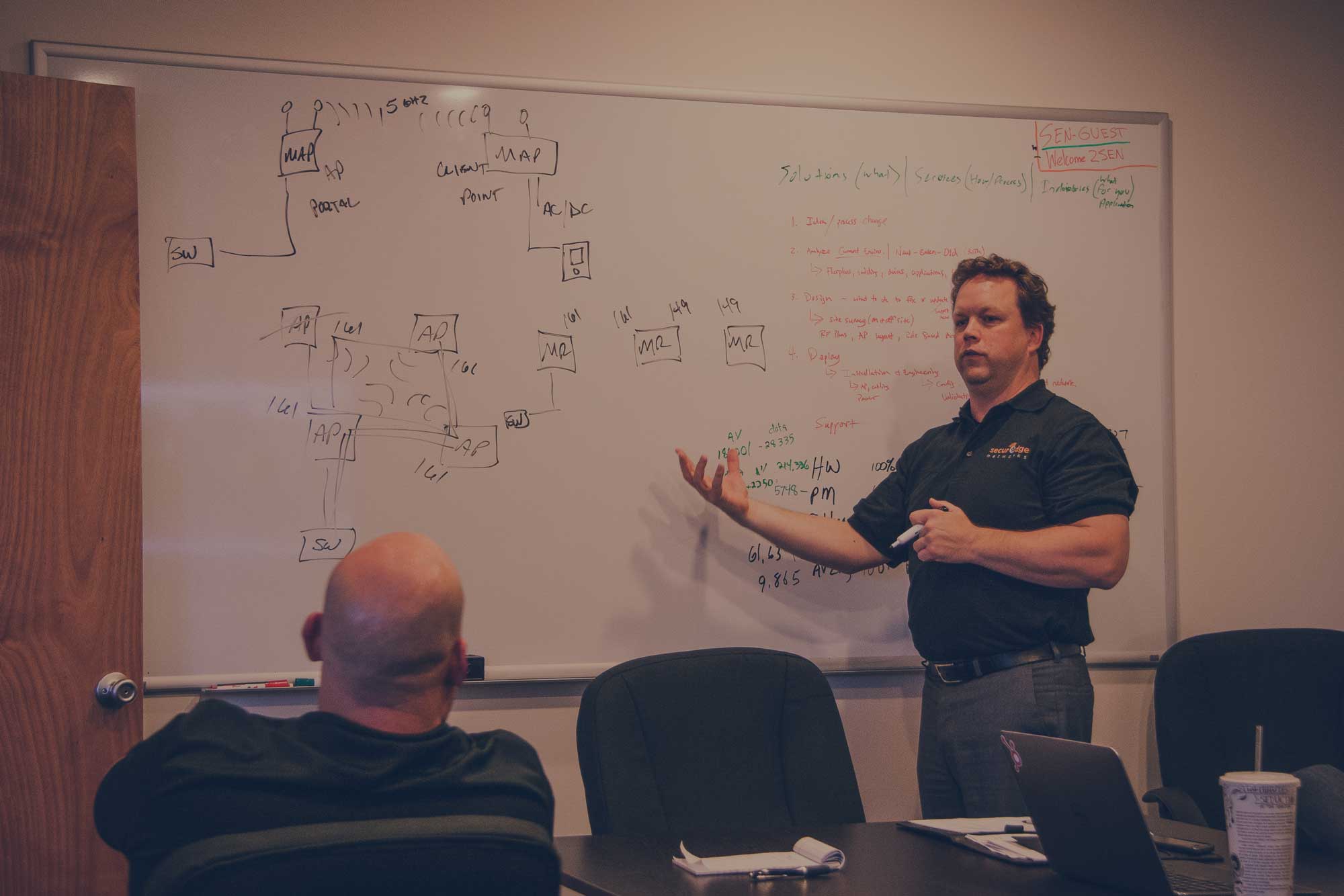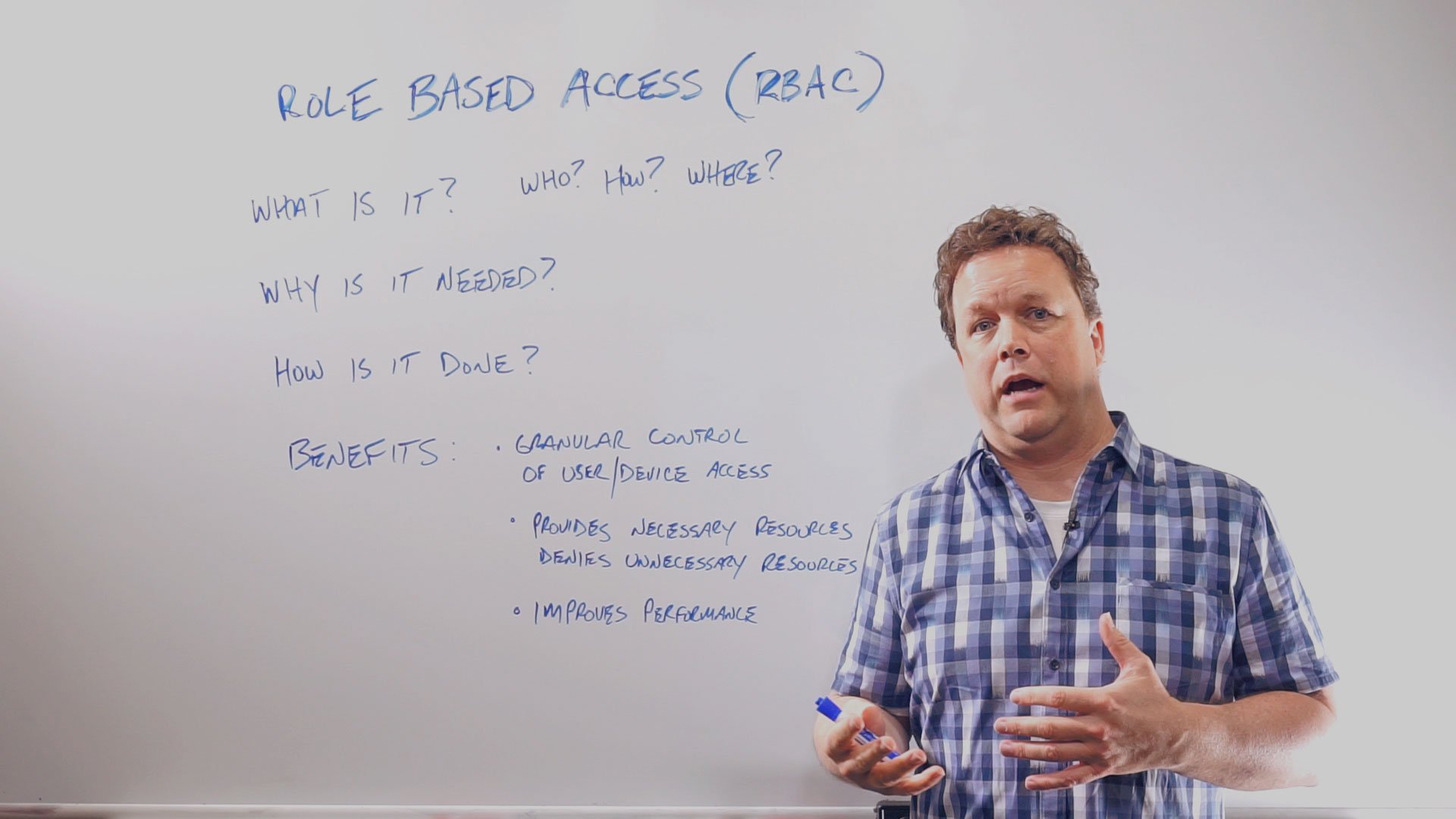
As businesses and schools begin to reopen during the coronavirus era, there’s a term that has made its way into every department’s conversation—“contact tracing.”
It’s a successful strategy that has been critical in combating previous pandemic outbreaks such as SARS in 2003 and Ebola in 2014-2015. But now contact tracing has moved from in-person interviews to technology-based AI.
But what exactly is contact tracing, and how can you leverage your existing pre-COVID technology to help combat the pandemic? Here are the basics of contact tracing and how your organization can use existing technology investments to implement a form of contact tracing:
What is contact tracing?
In the past, contact tracing required the detective work of trained staff who interviewed people diagnosed with a contagious disease to figure out who they may have been in recent contact with—leaving a lot of room for human error.
It relied on the memory recall of individuals to establish a list of people that they may have exposed to the virus. With contact tracing, the general rule of thumb is to look for people who have been within a confined area for more than 10 minutes with an infected person.
However, it’s a laborious process that requires reaching out to dozens of contacts at a time.
What is WiFi-based contact tracing?
WiFi-based contact tracing is when your network leverages WiFi data and uses AI machine learning software to give you a report of everyone that has come into contact with a COVID positive person.
Now, you’re probably asking, “how does contact tracing actually work?”
Here’s a high level of the step-by-step process:
-
First: Each WiFi-enabled device gets onboarded with device registration software
-
Second: Your WiFi listens to each device and tracks the presence and location of users by utilizing telemetry data from the WiFi system.
-
Third: When HR or administration is informed of an infected person, they will log into their software and self-generate a report of everyone that has been in recent contact with the infected person (General rule, again: confined space for more than 10 minutes)

Your network is the key to accessing the information necessary to implement contact tracing without any additional labor.
Dr. Laura Breeher, medical director of occupational health services at the Mayo Clinic, states that this technique is a “cornerstone” of preventative medicine and has the “crucial importance of identifying those individuals who have been exposed quickly and isolating or quarantining them.”
Your WiFi network can give you the ability to turn old-fashion detective work into more effective AI-generated reporting. Consequently, saving you thousands of dollars in labor by leveraging the technology investments that you may already have made.
Smart WiFi for the win!
Can my current network perform contact tracing?
A few large WiFi hardware manufacturers, such as Aruba, had initially built their products for real-time location services (RTLS), presence analytics (or proximity tracing), and other security requirements.
However, they were able to pivot this same technology and repurpose it for the intent of delivering actionable data that could be used for contact tracing. They are currently offering this solution for little or no cost to their customers, as long as you have the key components already in place—which most of their customers do.
Technically, if your hardware can collect WiFi data for RTLS and presence analytics, your network will also have the capability to use your WiFi for contact tracing.
Though, you would also need device registration software and specific software to generate the reporting. But to be honest—there are not many other products out there that can truly do that effectively at all, let alone implementing a third-party software solution.
So it’s always a good idea to talk to someone who specializes in WiFi about your existing system and see what options you have when implementing contact tracing.
At SecurEdge, we make sure that every WiFi network that we put in place has cutting-edge intelligence, and we engineer it with these future capabilities in mind.
However, suppose the infrastructure isn’t there to facilitate this. In that case, you won’t be able to do WiFi-based contact tracing until you’re ready for a network refresh with products that have this capability, or you introduce the component(s) that are needed to support the solution.
How can I contact trace without WiFi?
If your current WiFi network can’t perform contact tracing, there are non-WiFi based solutions. Bluetooth low energy beacons (BLE) and GPS apps, such as the free COVID Safe App, that may be used for contact tracing.
Google and Apple also created an Exposure Notification System API built on Bluetooth technology that can be used by each state government so they can create their own App.
Alabama’s state government just recently launched one of the first apps using the Google | Apple API.
Even so, we have found that the adoption rate on these apps is generally very low.
Between a lack of location information and not having the ability to work at all if that application is not running or the battery running out, the data is hugely limiting and relies on instrumenting all the users to download the apps.
(There’s also the possibility of implementing wearable technology, but this adds another high financial cost that is typically too much for most businesses).
Contact tracing apps have generally only been used by individuals and not businesses or organizations trying to get visibility in their buildings.
Therefore, if you’re a school or business trying to implement contact tracing, WiFi-based locating (or Bluetooth-based, if you can afford the hefty investment) could be of use to you in an effort to calm some of the fear that your staff, students, and guests may have when attempting to return to the office or campus.
The catch is, you do need the right hardware and software tools in place to make this strategy work. Let us know how we can help you assess if you have the right infrastructure in place to enable contact tracing at your business.






